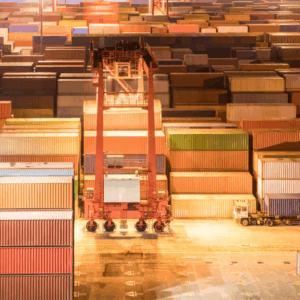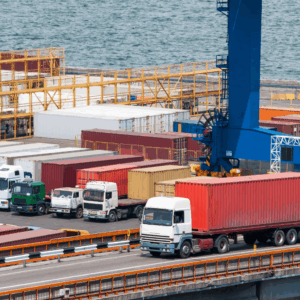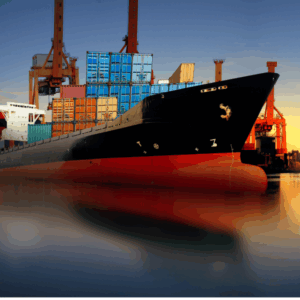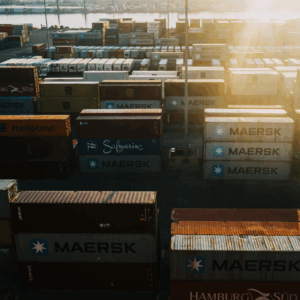 Freight forwarders have evolved far beyond the traditional role of brokers. In today’s fragmented, hyperconnected global economy, they serve as logistics architects, cost managers, and strategic partners.
Freight forwarders have evolved far beyond the traditional role of brokers. In today’s fragmented, hyperconnected global economy, they serve as logistics architects, cost managers, and strategic partners.
Their task is not just to move goods but to design multimodal, cost-efficient, and risk-managed supply chains tailored to each shipper’s operational context. This article dives into advanced logistics thinking from a leading academic source and applies it to the realities of modern freight management with ExFreight.
The Forwarder as a Global Logistics Designer
The logistics industry is structured around a triad of actors:
- Shippers, who initiate the transport of goods.
- Carriers, who physically move the cargo.
- And freight forwarders, who connect both sides and optimize the system in between.
But in practice, the forwarder does much more than intermediation:
- Consolidates and contracts supply options, reducing the relational load for shippers.
- Expand the decision space to enable access to diverse air, ocean, and sea-air solutions.
- Mitigates operational uncertainty, absorbing risks related to capacity, regulation, and documentation.
- Translates strategic goals into operational flows, matching network configuration to cargo needs.
Multimodal Management: Not Just Transport, but Network Thinking
Multimodal logistics is more than mixing modes. It’s about orchestrating the most advantageous flows of goods, capital, and information. Freight forwarders analyze variables like:
- Product value and density
- Origin and destination complexity
- Port/airport infrastructure
- Customs and trade agreements
- Seasonal fluctuations in capacity and rates
By assessing these dimensions, forwarders create mode-agnostic strategies. For example, they might combine sea and air transport to achieve the optimal balance of speed and cost for medium-density goods or shift from FCL to LCL depending on demand variability.
ExFreight excels in this domain by offering real-time rate simulation and pre-routing options across air and ocean transportation.
Forwarders and the Cost of Disintermediation
Much has been said about shippers bypassing forwarders through digital booking tools. But eliminating the forwarder often reintroduces hidden costs:
- Relational overload: Managing multiple carrier contracts, currencies, and regulations.
- Lack of bundling: Disconnected services like customs clearance or last-mile trucking.
- Operational gaps: Delays due to misaligned schedules, paperwork issues, or missed transshipments.
- Strategic myopia: Missing opportunities to optimize the full distribution cost, not just freight rates.
Forwarders reduce these risks by functioning as a single strategic layer that integrates and automates the entire freight journey.
Contractual Power: Managing Carrier Relationships
The forwarder-carrier relationship is complex. Depending on the mode, the forwarder may be:
- A customer (buying space in bulk),
- A competitor (offering bundled services) or
- A collaborator (working jointly to serve clients better).
In ocean freight, forwarders negotiate with carriers to secure flexible capacity and pricing. In air freight, the dynamic is even more layered, where forwarders manage blocked space agreements, backhauls, and rerouting to match urgency.

Sea-Air Logistics: The Intelligence of Combination
Rather than viewing air and ocean freight as extremes, forwarders utilize hybrid combinations to address mid-range logistics challenges. The sea-air model is ideal when:
- The whole Ocean is too slow for customer expectations,
- Full air is too costly for the product’s value,
- Intermediate hubs allow transshipment without regulatory friction.
This model is especially effective in Asia–Europe or Asia–Americas routes and is used by ExFreight to shorten delivery cycles while keeping cost exposure low.
From Mode to Network: The Strategic Evolution
Freight forwarders now offer more than just transport, and they also provide network design as a service. This includes:
- Supply chain segmentation: Matching transport mode to customer segment.
- Risk buffering: Distributing flows to reduce geopolitical or seasonal disruptions.
- Elasticity: Adapting capacity quickly during demand shocks.
- Visibility and control: Through digital platforms that integrate customs, compliance, inventory, and final-mile execution.
With platforms like ExFreight, clients can build logistics ecosystems that scale globally while operating locally, striking a balance between standardization and flexibility.
FAQs – Advanced Freight Forwarding
What is air freight?
Air freight refers to the transportation of goods by aircraft. It’s suited for high-value or time-sensitive products where speed and predictability matter.

They include deferred, standard, express, and direct services, with increasing speed and cost tiers based on the level of urgency.
What is the Pier Pass or TMF?
It’s a fee applied to container movements during peak hours in major ports to mitigate congestion and improve terminal efficiency.
Which trucking services does ExFreight offer?
- LTL, FTL, and Volume LTL
- Final-mile delivery
- Hazmat-certified domestic transport
- Integrated routing with ocean and air freight
Logistics Strategy Is the Forwarder’s Domain
Freight forwarders have transitioned from operational brokers to strategic logistics enablers. They reduce complexity, centralize control, and unlock efficiencies through tailored modal combinations, contract design, and digital enablement.
ExFreight exemplifies this evolution: a partner that not only moves cargo but orchestrates intelligent logistics solutions.




Leave A Comment
You must be logged in to post a comment.